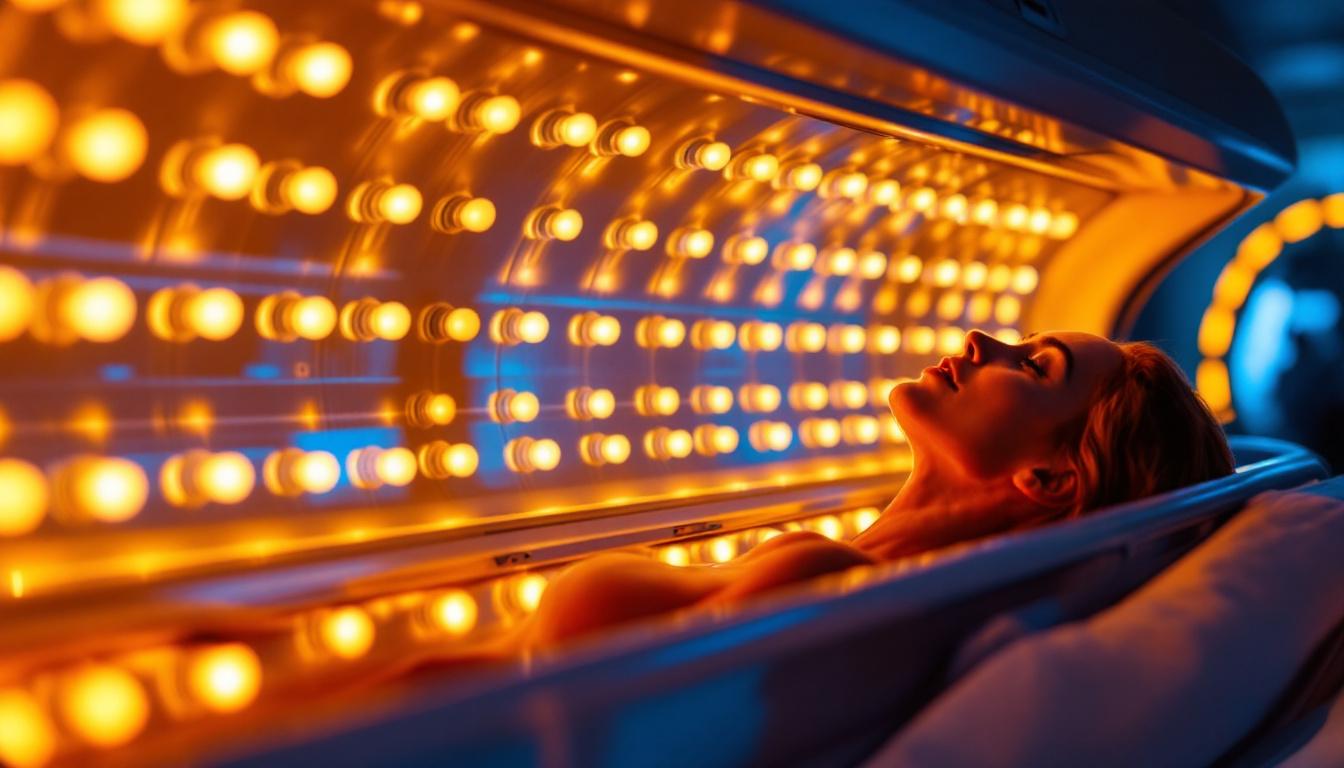
The tanning industry has witnessed significant advancements over the years, with tanning booth bulbs playing a crucial role in this evolution. As lighting technology progresses, the impact of these changes on the tanning experience, safety, and efficiency cannot be overstated. This article explores the evolution of tanning booth bulbs, highlighting their development, types, and the implications for lighting contractors in the industry.
In the beginning, tanning booths were rudimentary, often relying on basic incandescent bulbs that emitted a limited spectrum of light. These early bulbs were not specifically designed for tanning purposes and posed various challenges for users and operators alike.
Incandescent bulbs were the go-to option for early tanning booths. While they provided some level of UV exposure, the efficiency was low, and the heat generated was considerable. Users often found themselves uncomfortable, and the risk of overexposure to UV radiation was a significant concern.
Moreover, the lifespan of incandescent bulbs was relatively short, requiring frequent replacements. This not only increased operational costs but also hindered the overall tanning experience. As awareness of the risks associated with UV exposure grew, the demand for safer and more effective tanning solutions began to rise.
Recognizing the limitations of incandescent bulbs, manufacturers began to explore fluorescent technology as a viable alternative. Fluorescent tanning bulbs offered a more efficient way to produce UV light while generating less heat, significantly improving user comfort.
These bulbs utilized a phosphor coating that converted UV light into visible light, allowing for a more controlled tanning experience. The introduction of fluorescent bulbs marked a turning point in the industry, as they provided a more consistent tanning result and reduced the risk of overheating.
As the popularity of tanning booths grew, so did the sophistication of the technology behind them. The development of specialized fluorescent bulbs that emitted specific wavelengths of UV light catered to different skin types, allowing for a more personalized tanning session. This innovation not only enhanced the tanning experience but also helped to mitigate the risks associated with skin damage, as users could select the optimal settings for their individual needs. Furthermore, the introduction of timers and automatic shut-off features in tanning booths added an extra layer of safety, ensuring that users would not exceed recommended exposure times.
Additionally, the aesthetic design of tanning booths evolved alongside the technology. Early booths were often cramped and uninviting, but as consumer demand increased, manufacturers began to prioritize user experience. Modern tanning booths now feature spacious interiors, soothing ambient lighting, and even built-in sound systems, creating a more relaxing environment for users. This transformation reflects a broader trend in the wellness industry, where comfort and ambiance play a crucial role in attracting and retaining clientele.
As the tanning industry continued to evolve, so did the technology behind tanning booth bulbs. With a focus on improving efficiency, safety, and user experience, several innovations emerged that transformed the landscape of tanning.
High-pressure tanning bulbs represented a significant advancement in tanning technology. Unlike traditional fluorescent bulbs, high-pressure bulbs emitted a higher intensity of UV rays, allowing for quicker tanning sessions. This innovation catered to the growing demand for faster results, making it a popular choice among users.
Furthermore, high-pressure bulbs typically had a longer lifespan than their fluorescent counterparts, reducing the frequency of replacements and maintenance. This not only benefited tanning salon owners but also enhanced the overall customer experience by minimizing downtime.
In response to the increasing awareness of skin health and safety, full-spectrum tanning bulbs were developed. These bulbs emitted a balanced spectrum of UV light, including UVA and UVB rays, which are essential for effective tanning while minimizing the risk of skin damage.
Full-spectrum bulbs also provided a more natural-looking tan, appealing to users who sought a sun-kissed glow without the adverse effects associated with overexposure. The introduction of these bulbs underscored the industry’s commitment to safety and customer satisfaction, leading to a more informed consumer base.
The emergence of LED technology has revolutionized various sectors, and the tanning industry is no exception. LED tanning bulbs have gained traction due to their energy efficiency, longevity, and reduced environmental impact.
LED bulbs consume significantly less energy compared to traditional tanning bulbs, making them an attractive option for salon owners looking to reduce operational costs. Additionally, LED bulbs boast an impressive lifespan, often lasting several times longer than conventional bulbs. This longevity translates to fewer replacements and lower maintenance costs, allowing businesses to allocate resources more effectively.
The energy efficiency of LED technology also aligns with the growing emphasis on sustainability within the industry. As consumers become more environmentally conscious, salons that adopt LED tanning solutions can enhance their brand image and appeal to eco-minded clients.
Another advantage of LED tanning bulbs is the ability to customize the tanning experience. With advancements in technology, manufacturers can create bulbs that emit specific wavelengths tailored to individual skin types and tanning preferences. This level of customization allows salons to offer personalized services, enhancing customer satisfaction and loyalty.
Furthermore, the ability to control the intensity and duration of UV exposure with LED technology ensures a safer tanning experience. By minimizing the risk of overexposure, salons can foster a more responsible approach to tanning, aligning with the industry’s commitment to safety.
As tanning booth technology has evolved, so too have the safety considerations and regulations surrounding their use. The tanning industry is subject to scrutiny due to the potential health risks associated with UV exposure, prompting manufacturers and salon owners to prioritize safety.
UV radiation is categorized into three types: UVA, UVB, and UVC. While UVA rays penetrate deeper into the skin and are primarily responsible for tanning, UVB rays play a crucial role in vitamin D synthesis and can cause sunburn. UVC rays, on the other hand, are mostly absorbed by the Earth’s atmosphere and do not pose a significant threat to human health.
Modern tanning bulbs are designed to emit a balanced spectrum of UV rays, ensuring that users receive the benefits of tanning while minimizing the risks associated with overexposure. Understanding the differences in UV radiation is essential for both lighting contractors and salon owners to ensure compliance with safety standards.
Regulatory bodies have established guidelines to ensure the safe use of tanning equipment. These regulations often dictate the maximum allowable UV output, required safety features, and recommended exposure times. Lighting contractors must stay informed about these regulations to ensure that their installations meet safety standards and provide a safe environment for users.
Additionally, salons are encouraged to implement safety measures, such as providing protective eyewear and educating clients about responsible tanning practices. By prioritizing safety, salons can build trust with their customers and promote a positive image within the industry.
As technology continues to advance, the future of tanning booth bulbs looks promising. Innovations in materials, design, and energy efficiency are expected to shape the next generation of tanning solutions, providing even more options for lighting contractors and salon owners.
The integration of smart technology into tanning booths is on the horizon. Smart tanning solutions could allow users to monitor their tanning sessions through mobile apps, providing real-time feedback on UV exposure and session duration. This level of interactivity could enhance the overall tanning experience while promoting responsible practices.
Additionally, smart technology could enable salons to track customer preferences and tailor services accordingly. By leveraging data analytics, salon owners can optimize their offerings and improve customer satisfaction, ultimately driving business growth.
As the industry evolves, the emphasis on safety and sustainability will remain paramount. Manufacturers are likely to invest in research and development to create tanning bulbs that minimize health risks while maximizing energy efficiency. The trend toward eco-friendly solutions is expected to continue, with a growing number of salons adopting sustainable practices to meet consumer demand.
Furthermore, ongoing education and awareness campaigns will play a crucial role in promoting responsible tanning practices. By empowering consumers with knowledge about the risks and benefits of tanning, the industry can foster a culture of safety and responsibility.
The evolution of tanning booth bulbs has significantly impacted the tanning industry, transforming the way users experience tanning and how salon owners operate their businesses. From the early days of incandescent bulbs to the current advancements in LED technology, the journey has been marked by innovation and a commitment to safety.
As lighting contractors navigate this dynamic landscape, understanding the advancements in tanning bulb technology, safety regulations, and future trends will be essential. By staying informed and adapting to the changing needs of the industry, contractors can position themselves as leaders in the lighting sector, providing valuable insights and solutions to salon owners.
Ultimately, the evolution of tanning booth bulbs reflects a broader trend in the lighting industry—a shift toward efficiency, safety, and sustainability. As technology continues to advance, the future of tanning solutions promises to be brighter than ever, offering exciting opportunities for both consumers and industry professionals alike.
As the tanning industry continues to embrace the latest in bulb technology, ensure your salon is at the forefront with LumenWholesale. We provide lighting contractors with the highest quality, spec-grade tanning booth bulbs at wholesale prices that can’t be beaten. Our selection not only meets but exceeds industry standards, guaranteeing you receive lighting solutions that are as reliable as they are efficient. With the added benefits of free shipping and bulk buying made simple, LumenWholesale is your go-to source for premium lighting without the premium price tag. Elevate your tanning salon’s experience and embrace the future of lighting by visiting Wholesale Lighting at the Best Value today.

Discover the essential best practices lighting contractors follow when working with high pressure sodium lights.

Discover essential insights for lighting contractors on under cabinet lighting solutions.

Explore the transformative journey of the lighting industry with “Light Light Bulb,” delving into innovative technologies, sustainable practices, and the future of illumination.

Discover the transformative power of under-counter LED light strips in enhancing your home’s ambiance and functionality.